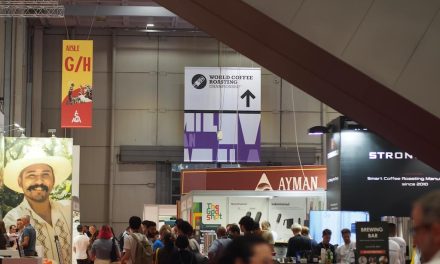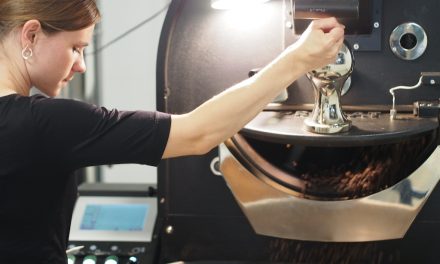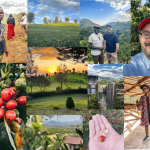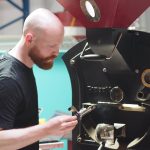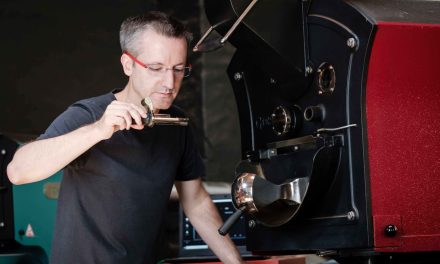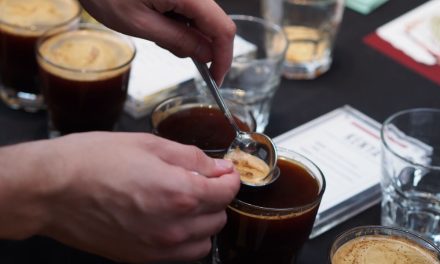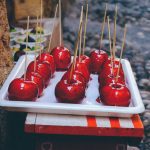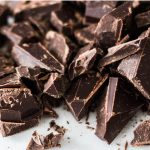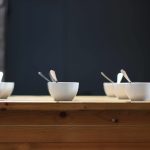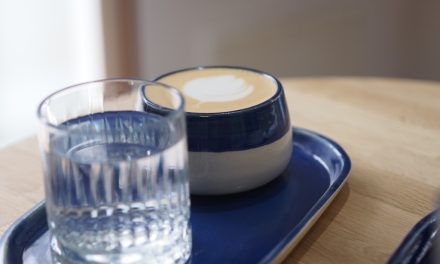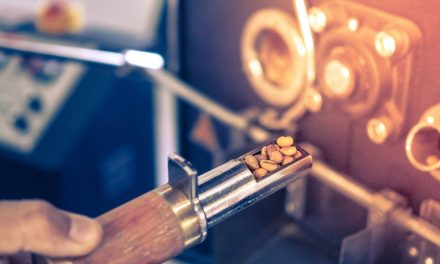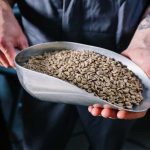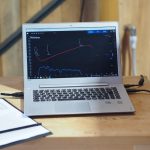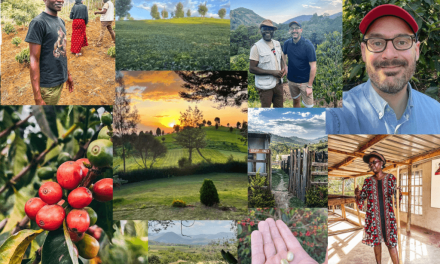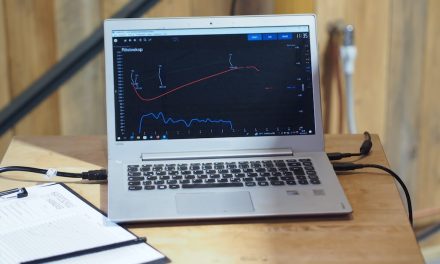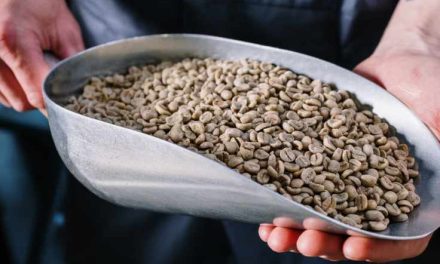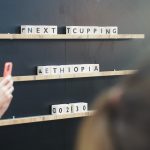
Good idea? 3 ways to organize your coffee bar and coffee portfolio
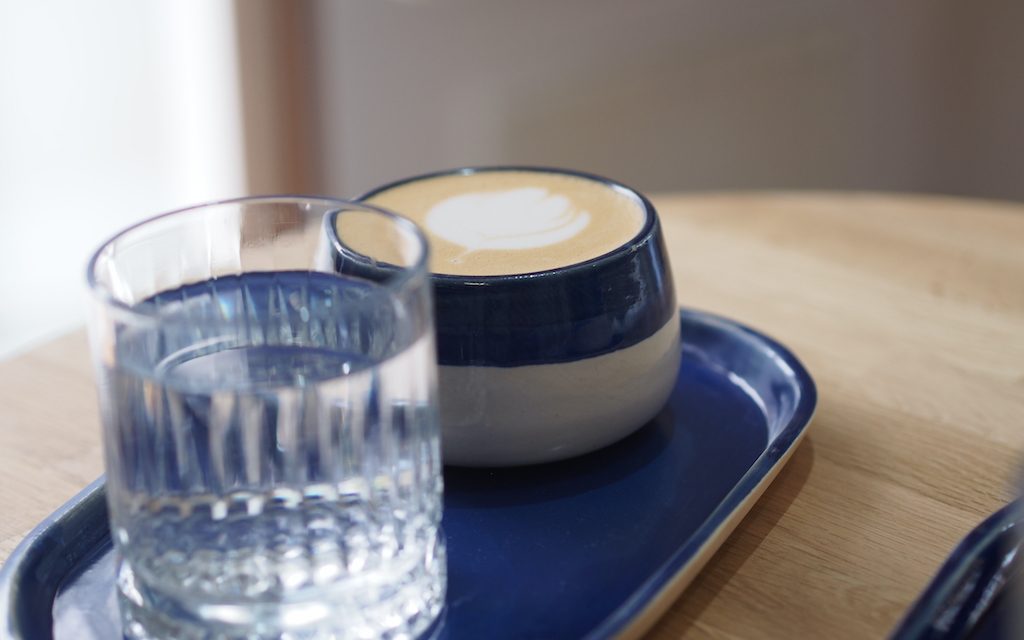
How do you sell specialty coffee in other countries and cities? We present three examples of cafés and roasters that have organized their bar and product portfolio differently.
And we explain why we like the idea and the examples very much.
#1 | Sloane Coffee Roasters from Bucharest organize their coffee portfolio differently
In Bucharest, we noticed the tiered model of Sloan Coffee Roasters. They offer their roasted coffee in different segments. With different coffees, categories, cup profiles and prices. In this way, they want to appeal to different customer groups and also make it easier for them to choose the right coffee.
These 5 categories are available:
- Rarities
- Experimental
- Premium Lots
- Classic Profiles
- Accessible Specialty
- Decaf
We took a look at the Sloane Roasters website for you and will show you which coffees with which characteristics are behind them.
These coffees can be found in the different categories:
Rarities
The only coffee in this category comes from Colombia. It consists of Caturra and Bourbon and is co-fermented with Citrullus nectar before being washed. The cup profile indicates notes of watermelon, mango, mascarpone, and waffles.
The 250g package costs the equivalent of 19.88 euros. Sloane recommends both filter coffee and espresso for preparation. The color of the bag is also striking: a rich red indicates something special.
Experimental
“Experimental” actually has less to do with a price range than with the cup profile and preparation.
The coffee from El Salvador by Rodolfo Rufatti Batlle has notes of marzipan, cocoa nibs and black tea, which the coffee gets from a 48-hour anaerobic fermentation. It is a Sarchimor variety from his farm Finca El Salvador. The coffee works as an espresso as well as a filter coffee.
Another coffee in this category is the Rwanda Bwenda, processed as an anaerobic natural. It comes with the following flavor descriptions: raspberry liqueur, acacia flowers, agave syrup, star fruit and dates. The Red Bourbon variety is ideal in this coffee as an espresso and as a filter coffee.
With the packaging in mind, Sloane relies on the colors red and peach in this category.
Premium Lots
Premium coffees start at 14.60 euros for 250g. This applies to a Papua New Guinea Kindeng Natural with notes of baked berries, molasses, milk candy and raisins. Information on the growing altitude, varieties and cooperative complete the characteristics. It is a coffee that comes into the cup in a balanced way as both a filter coffee and an espresso.
At the upper price end, at 20.08 euros per 250g, we discover a Colombian Natural “La Cristalina”. Luis Jose Valdes produces this coffee in the Caldas region at an altitude of 1650 meters as a single variety Bourbon. In the cup profile, we can expect notes of violet, vanilla, raspberry, molasses and blood orange. It is said to be suitable for both espresso and filter coffee methods.
In between, there is also an Ethiopian Dimtu Natural and a washed coffee from Honduras called “Los Quetzales”.
Classic Profiles
In the classic segment, we find an Ethiopian Guji Natural, described as having notes of dark forest fruit, peach compote, chocolate-covered plum, cherry blossom and fresh cream. In this case, it is an espresso. In addition, we find information about the altitude of the plantation, the cooperative and the variety. Sloane puts a price tag of 12.78 euros on it.
Accessible specialties
This could be a coffee from Guatemala for 11.36 euros (converted) per 250g package.
The cup profile reads: milk chocolate, toffee, dried apricots, Golden Delicious, almonds. In addition, there is detailed information about the farm, the altitude, the varieties, the exact region and the processing.
This coffee is suitable for both filter coffee and espresso.
Or it could be a Brazilian coffee for €9.53 for the 250g pack. The cup profile is described as having notes of hazelnut, plum and milk chocolate. This coffee is roasted for preparation as espresso and was processed as natural after harvesting. We also find information about the farm, the varieties, the altitude and the region in Brazil.
These coffees are in the shop at the time of writing. This may change when new coffees arrive. Therefore, these descriptions only serve as an example.
Decaffeinated coffee (“Decaf”)
At Sloane, a Colombian coffee can be found in the decaffeinated coffee section. The decaffeination process uses ethyl ethanol, which is obtained from sugar cane. Both filter coffee and espresso are indicated as preparation recommendations. The flavors to expect are mirabelle plum, plum, and almond croissant.
What we liked about it:
The subdivision of coffees into different categories, which are clearly named and also the dividing shaft, can provide a good orientation for both normal coffee drinkers and coffee nerds.
It offers the charming advantage of serving many customer segments in a value-free way, because no coffee is better or worse than another category. For beginners, it can become a product staircase where the choice can fall each time on a coffee from a different category.
As a coffee roaster, I can offer new coffees in the “Experimental” and “Rarities” categories, thus maintaining the joy for me as well as for my customers. It may also make purchasing green coffee easier because, as a roaster, I can clearly see whether a coffee falls into one of my segments, thus making a known number of customers happy.
It can be easier for employees and baristas because they can better advise customers on preferred notes in coffee.
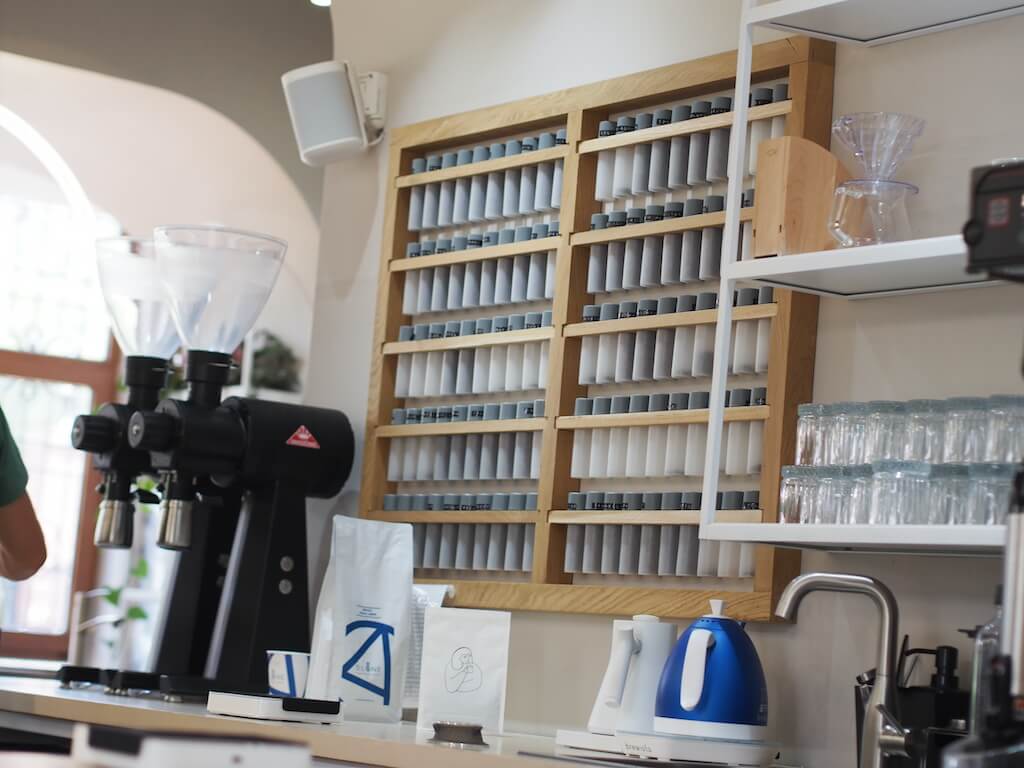
Sloane Coffee Roasters organizes its product portfolio into different categories, from “classic coffee” to “rarities”. The latter have nothing to do with the often referred to rarity Jamaica Blue Mountain.
#2 | Samba Roasters in Athens
Samba Roasters does something in the bar that we liked: they divide their coffee menu into different categories.
Each drink is available as a house blend, a single estate or a micro-lot. An espresso made from a house blend costs €1.60, an espresso made from a single estate costs €1.90, and an espresso made from a micro-lot costs €2.60.
Do Samba Coffee Roasters baristas often have to explain the differences between the various categories? Or do coffee drinkers understand the idea of the different qualities on the menu?
“Our baristas are well trained to explain the differences between the various categories,” Kamil, Head of Marketing at Samba Coffee Roasters, tells me. ”Most customers are very familiar with the differences and our baristas are happy to explain the differences to those who are not yet familiar with them and provide more information about the coffees.”
I wanted to know from Kamil which category is most popular.
“The House Blend, our exclusive blend, is clearly in the lead. During weekends and in summer, many customers order single estate coffees and micro-lots. These are primarily tourists exploring Athen Downtown. Recently, we have also noticed an increased demand for competitor coffees.”
Competitor espressos cost 7.50 euros. And this is how it could sound in the description:
Alo Coffee Ethiopia, 74158 variety, 72-hour anaerobic fermentation with notes of lemongrass, apricot, mango and melon.
Or: Savage Coffee – Parabolic Panama, Green Tip Geisha variety, natural carbonic maceration with notes of cherry, raspberry, strawberry and pineapple.
What we liked about it:
Similar to the example above, this menu can appeal to a wide range of target groups. Some start with the exclusive house blend and stay there, while others also try single-estate or micro-lot coffees. Those looking for an unusual taste and something special will find it in the competition coffees.
Differentiation in the product range can have a very positive economic impact. It can also help to further enhance the coffee customer’s perception of the business as a specialist shop for special coffees. If you know so much about coffee, you must be good at making it, right?
In this case, unlike in some cafés in Bucharest, there are two ways of preparing the espresso: as a single-dosing or from the large mill as standard. What is important now is that baristas know the differences and are also able to explain them to customers in a clear and engaging way.
Of course, it can be a special experience to try an Americano with the house blend, one with the single estate and one with the micro-lot coffee at the same time. It’s even more fun to discover the differences with someone else. And “going for a coffee” can lead to an “aha” moment that you are happy to tell friends and relatives about.
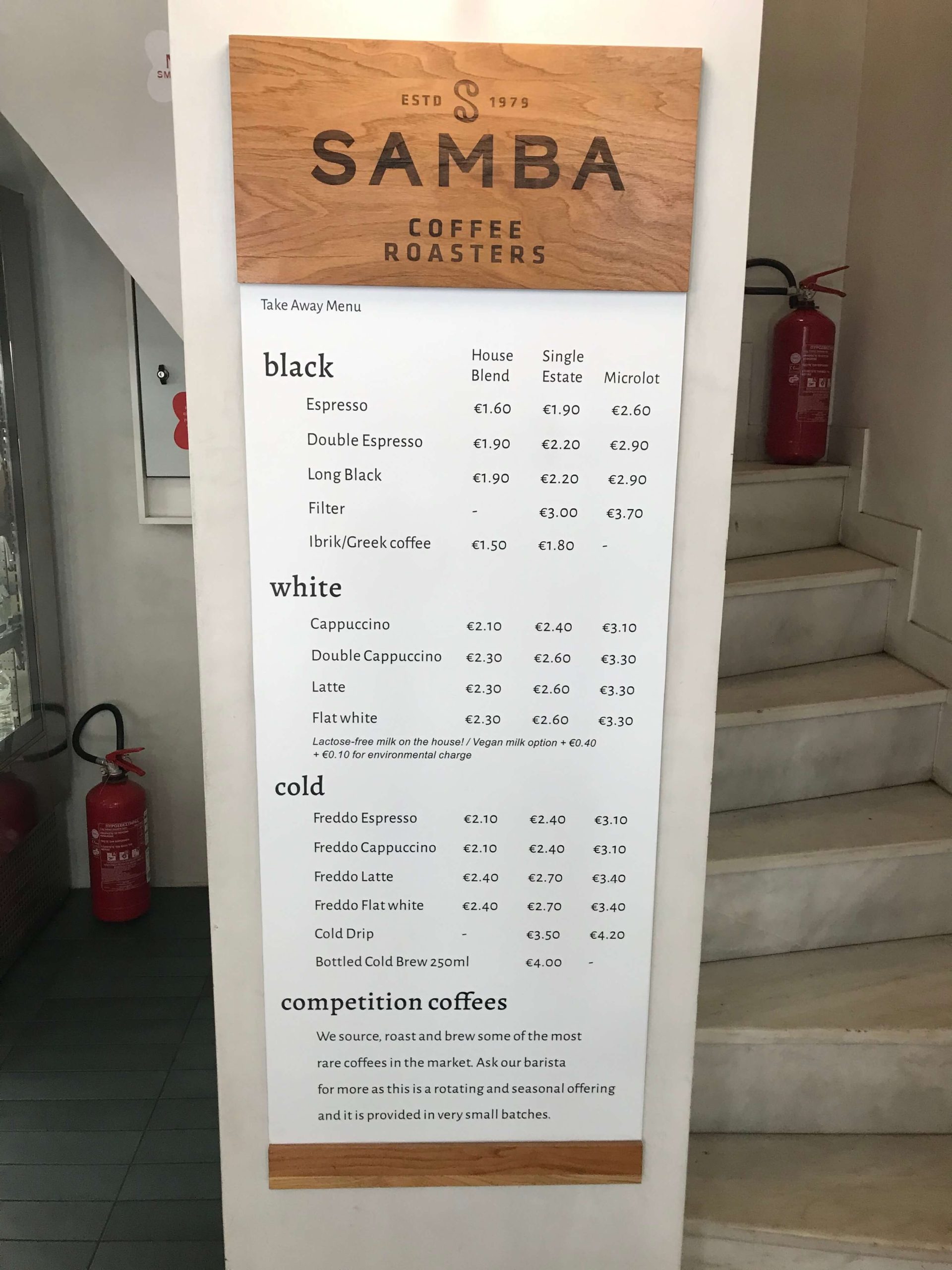
Samba Coffee Roasters offers every coffee drink as an exclusive house blend, as a single estate or as a micro-lot.
#2a Kafeterija Porto in Tivat
In the tranquil seaside resort of Tivat in Montenegro, we were also able to select different coffees at Kafeterija Porto. It resembles the idea of Samba.
The espresso is available in the variants Grand Cru (for €2.80), Selection (for €2.50) or as a blend (for €2.40). The prices make it clear that Tivat is a tourist resort, and a view of the water is included for free.
What does “Grand Cru” mean? What kind of coffee can I expect? In the menu, we can choose between “Black Diamond Brazil”, “Cuba” and “Nicaragua”.
“Black Diamond Brazil” offers ‘top quality beans. Black Diamond is distinguished by its balanced taste and milk chocolate notes’.
The espresso made from Cuban beans ‘is characterized by its rich body and long aftertaste with nut and chocolate flavor notes’.
From Nicaragua comes an “elephant bean featuring a pleasant and subtle taste, full body, sweetness and emphasized aromaticity”.
Or would you prefer an espresso from the “Selection” category? Here, too, there are single origins, namely from Colombia, Ethiopia and Peru.
The “Blend” category offers a variety of options: the “Latino Blend” consists of 60 percent Brazilian beans and 40 percent Guatemalan beans. The “Blend” is also based on Brazilian beans (60 percent), with the addition of 40 percent coffee from India. The “Night Blend” is a decaf with beans from Honduras, Guatemala and Brazil.
And it doesn’t matter whether you order an espresso, cappuccino or café latte: you can always choose an espresso from one category.
What we liked about it:
Even more so than with Samba Coffee Roasters, you are spoilt for choice when it comes to finding the right espresso. At the same time, it can be a pleasure to drink your way through the menu.
The design of the menu is very nicely laid out and also encourages you to try different variations.
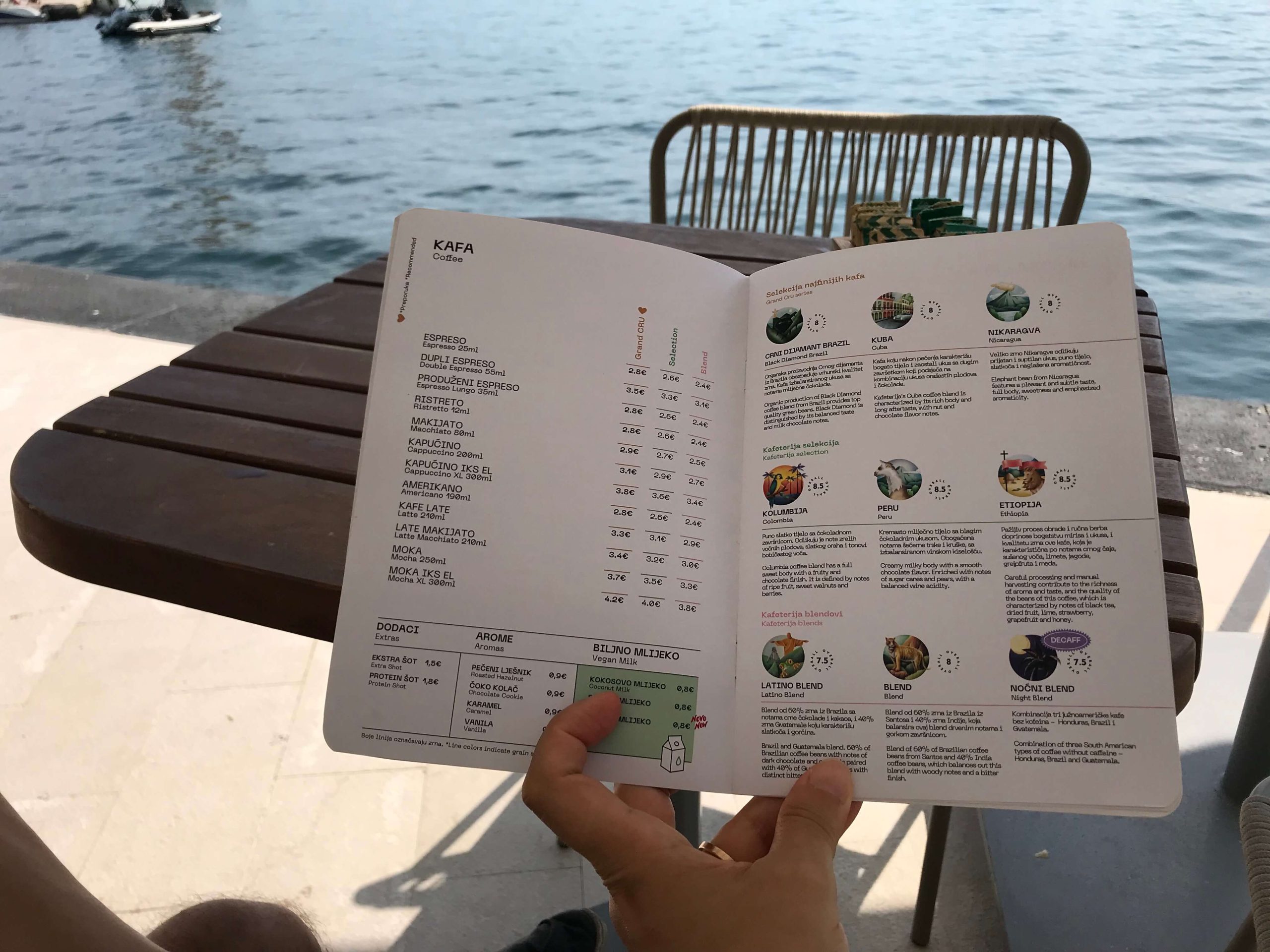
The view of the marina of Tivat is included. The menu is well laid out and inviting.
#3 Meron Specialty Coffee Roasters from Cluj-Napoca
I have rarely seen such a simple yet meaningful coffee menu as at Meron.
Romania has the advantage that you don’t have to argue so much against bad coffee. Until the early 2000s, the country had no significant coffee history, baristas told us.
Until then, coffee was very rare, and certainly not available as a mass-produced item in supermarkets. Instead, people roasted chicory root, lupins and other ingredients to turn them into a kind of coffee-like drink. The population is, so to speak, going straight for specialty coffee, followed by good commodity coffee.
The coffee drinker at Meron simply decides whether it should be pure espresso, whether milk should be added and whether it should be a chilled version. The number of espresso drops indicates the number of espresso shots.
This way, even the practiced coffee drinker’s eye can quickly find his favorite. In addition, the size of the drink can help with the selection, and so we also find the information in milliliters. “Lei” is the price and 12 Lei is about 2.40 euros.
What we liked about it:
Experienced and less experienced coffee drinkers will quickly find the drink of their choice on the menu. It is extremely clear what exactly you get in your cup, at least in terms of the amount and the ratio between espresso and milk.
We think it’s a very transparent and easy-to-follow order. This can encourage coffee drinkers to try out other drinks to test new ratios of espresso and milk.
We found that we can read the menu forwards and backwards: forwards means in this case based on the name of the drink, backwards based on the size of the drink.
In general, we always noticed in Romania in the cafes and roasteries in Bucharest, Brasov and Cluj-Napoca that there is always a menu hanging somewhere that explains the different drinks graphically. That was great for us, but also for coffee drinkers of all kinds, because it is clear what kind of drink you get.
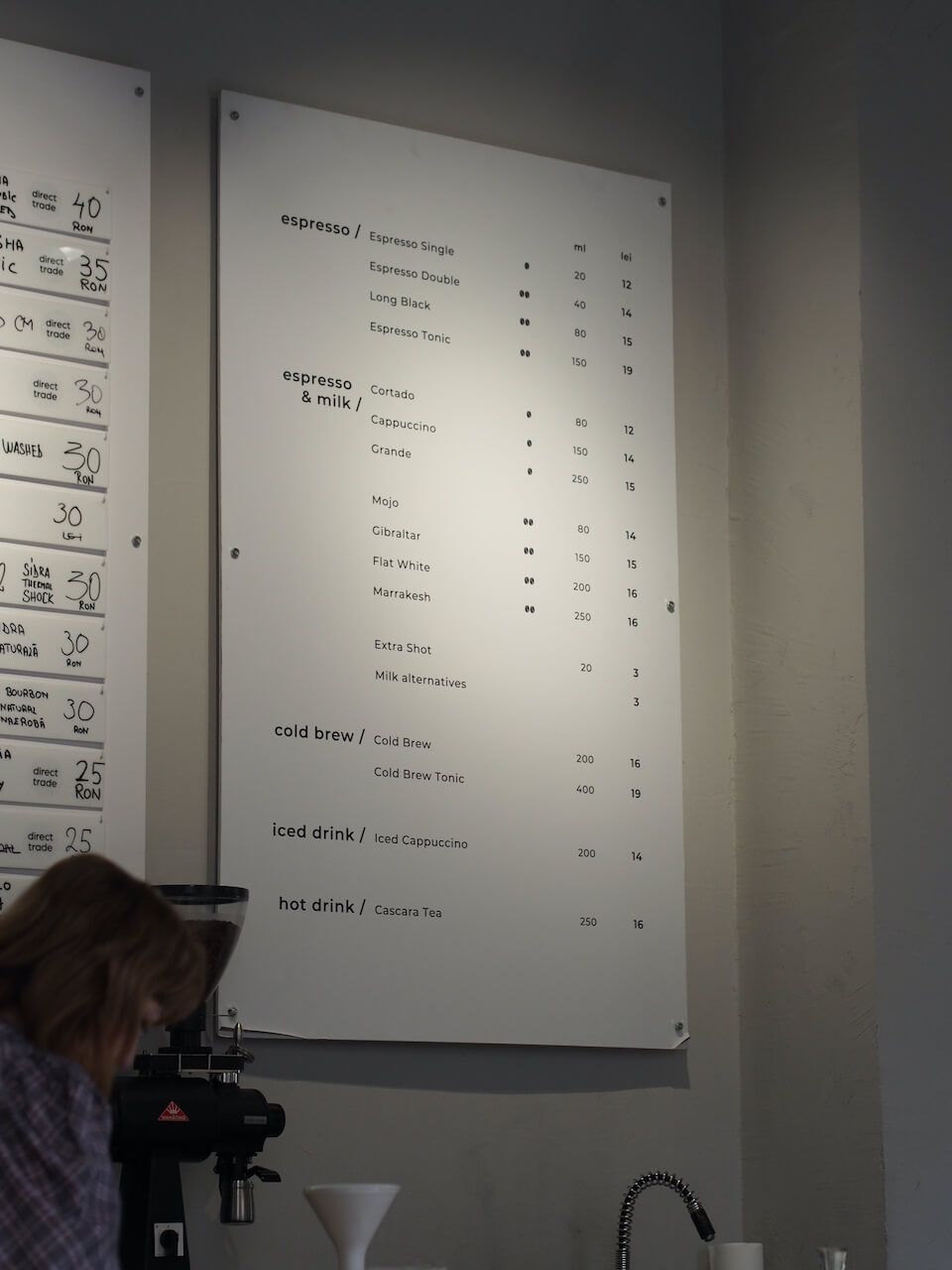
Meron Coffee Roasters offers its customers a very organized coffee menu.
Have you also noticed good examples of clarity in café menus, product differentiation in bars or in the organization of a product portfolio? Let me know by sending an email to redaktion@roestprofile.de

